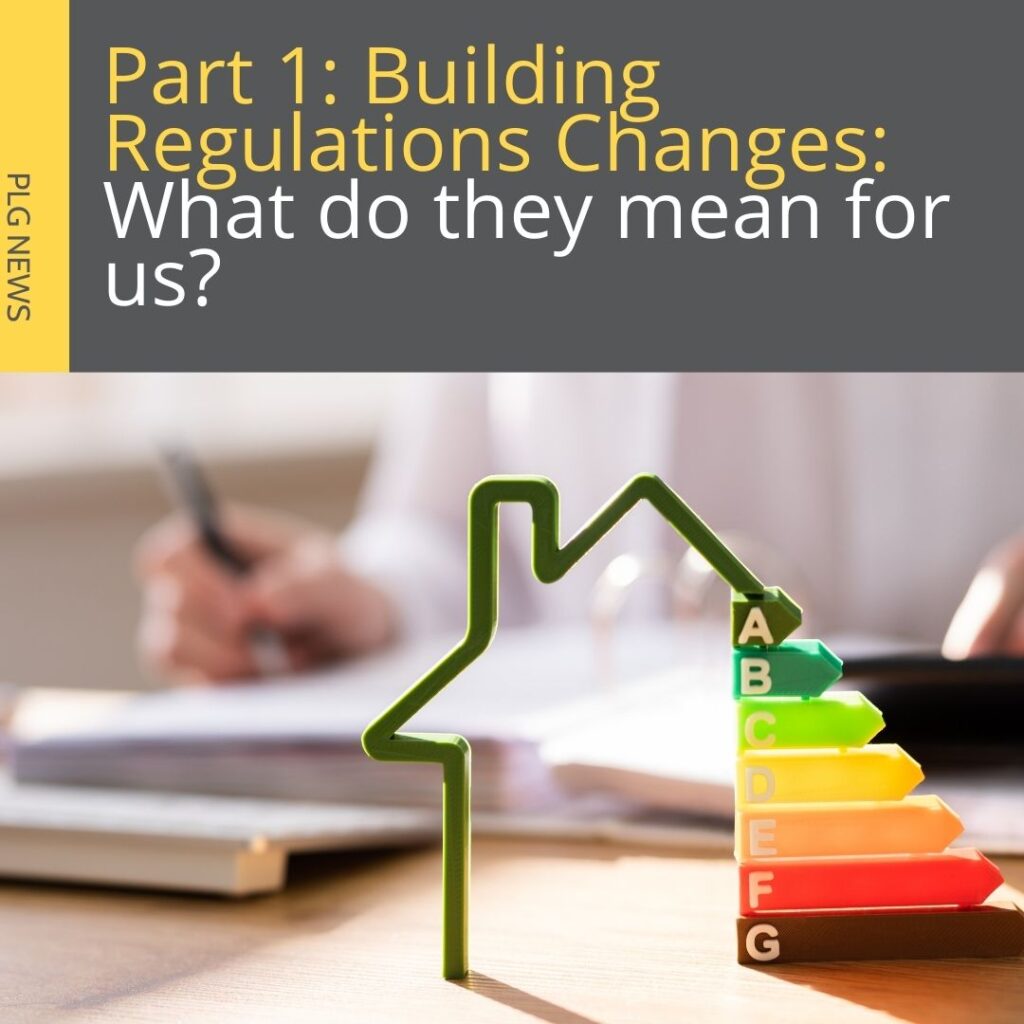Not many people will realise that on June 15th 2022 the Building Regulations for England will be updated and amended. In the next two blogs we’re going to look at how this will affect both new build and works to existing properties.
The main long-awaited changes to the Building Regs in respect of existing properties concentrate on four parts of the current building regulations. Today we are going to look at where the major changes lie in respect of energy efficiency in Part L of the regulations.
This part of the Building Regulations applies to energy use and has been considerably altered. Significant improvements are required in relation to energy use, and this will include any renovation or refurbishment where there is an extension or significant alteration to the existing fabric of the building. This is likely to mainly apply to the ground floor, external walls and roof. To take a new wall of an extension as an example: this now needs to meet a much lower thermal value which will require a significant increase in the amount of insulation fitted for the conventional masonry wall this might mean changing from 60 mm to 100 mm of insulation. This is likely to result in further increases in building costs. The footprint of any property will need to consider the increase in wall thickness given that the internal spaces are unlikely to be reduced. However the running cost for the completed property should be decrease as less heating will be required
Given the requirement for increased levels of insulation it may well be that alternative methods of construction may become more common in extensions to buildings such as the use of structural timber frames in the external walls as these can be beneficial in some circumstances. Crucially, the changes mean a much greater proportion of extensions will require assessment using SAP (Standard Assessment Procedure), the mode of compliance which considers the impact on the energy use of the whole house. Previously regulations only looked at the extension itself but now the whole property will be assessed by SAP. This is likely to mean that far more attention will need to be paid to the parts of the house that aren’t being altered as they may well need their thermal performance improved.
This will have the effect of requiring careful analysis of any existing property pre-purchase as to what the thermal performance of the existing property currently is as this will impact on the costs of the entire project. For example, in a major refurbishment to an existing dwelling that is totally un-insulated, the areas of the property which will remain unchanged can no longer just be ignored. Some consideration will now need to be given as to whether or not an un-insulated large house which requires some extension is better than an insulated but slightly smaller property that requires more extension. It may well mean that the smaller but insulated property will be cheaper to extend and adapt than the un-insulated.
Adam Oakley, PLG Architect says
This means that we will need to act in a more joined up or holistic way, including when a Property Search is underway. We will need to pay more attention to the building fabric and the energy running costs of an existing property as this may well impact on the upgrade costs of the whole project. The types of property available in any given search area are going to need to be fully considered at the outset.
In new build properties the targets in the Standard Assessment Procedure will be tightened still further with the intention of reducing carbon emissions by 30% at the current time. But the longer-term view is to reduce net energy usage to zero, encourage carbon offset and ultimately to make alternative heating systems such as air source heat pumps the default. The long-term aspiration is for all properties to be carbon neutral by 2050. There may also need to be further consideration as to design where fewer windows face the colder north, thereby conserving warmth, and solar panels are fitted to all roofs. This ultimately will impact the design of properties. Adam goes on to say,
The changes to the building regulations are simply a start to changes that are going to come further down the line and they are elements that we have been factoring in to our designs at PLG for quite some time.

